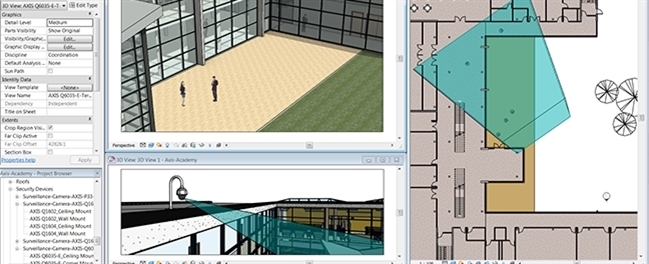
The concept of BIM is a process that has been planned since the 70s but has become widespread only with the development of 3D drawing programs. It has an acceleration that has been increasing in the world for approximately 10 years. Many countries in the world have required the use of BIM in public procurements. In our country, it has been used in active projects for the last 2-3 years. It must be used especially in large-scale works such as the Istanbul Airport and Metro projects. It will be used as the standard in all kinds of building production in the coming years.
As EEC, we used all Fire Alarm, Passage Control, CCTV and Sound systems of 20 platforms in Mahmutbey-Mecidiyeköy-Kabataş (M7) Metro procurement. As soon as we concluded our contract, we had to check all existing projects, correct them and adapt them to our systems. Delivery times of the construction site were also quite limited. All platforms were drawn with Autodesk® Revit® CAD drawing program, which could use BIM. At this stage, Smart Objects of all the products we use were provided and operated on the projects. All companies had the BIM models of all their products added to Revit.
At the end of the day, a three-dimensional realistic model of the entire platform emerged. While navigating through it, it was checked whether the products of different companies were in the places they should be and whether their images were suitable. Similarly, it was observed that the installations placed were in accordance with the architecture and the installations of other companies. When we look at the BIM models of the products, an environment has been created in which the model number, technical specifications, maintenance requirements, spare parts, assembly accessories, power consumption, etc. can keep all kinds of information in it.
All devices were processed on the Autocad drawings of all platforms within the teams to perform wiring and installation works. In the meanwhile, the details were checked through Revit in case of hesitations arising.
Especially, the camera system, which is one of the project requests, has been very useful for the necessity of having a 100% coverage area. It enabled us to place all our cameras in a way that we could see every point of the platforms with cost-effective numbers. While checking how the cameras fit precisely into the building layout, we were able to easily detect whether the camera's field of view could be blocked by columns or walls, and we moved the cameras so that they could view unexpected blind spots. We have eliminated the problems of blocking the field of view of the Direction Signs, which are frequently encountered in similar projects, before they occur.
We were also able to see how our cable installations reached the electrical rooms through the cable trays processed on Revit, and how they interacted with other installations such as plumbing, energy cables, etc. This enabled us to see the cable and cabling workmanship we would use before we started the project. By this means, we determined our costs largely before starting work.
We will use this database not only in the planning and construction of the building, but also in the planning of the maintenance and management initiatives that will be under our control in the coming years.
In order to manage Big Data and keep the cost under control, we consider that BIM modeling will be used in all large and small projects in the coming years.